The proven method for regaining your strength and confidence, long term.
Wondering what’s going on with your pelvic floor, but too embarrassed to ask?
Join 10,000+ women reclaiming strength and
confidence with the RYC® Method.

Join 10,000+ women reclaiming strength and
confidence with the RYC® Method.
Are you experiencing any of these symptoms?
- Pain in the lower abdomen
- Pain in the deeper tissues around your hips and above your thighs
- Burning sensation when you pee
- Incontinence
- Painful bowel movements
- Feeling of discomfort or heaviness in your lower abdomen, vagina or rectum
- Pain during or after sex
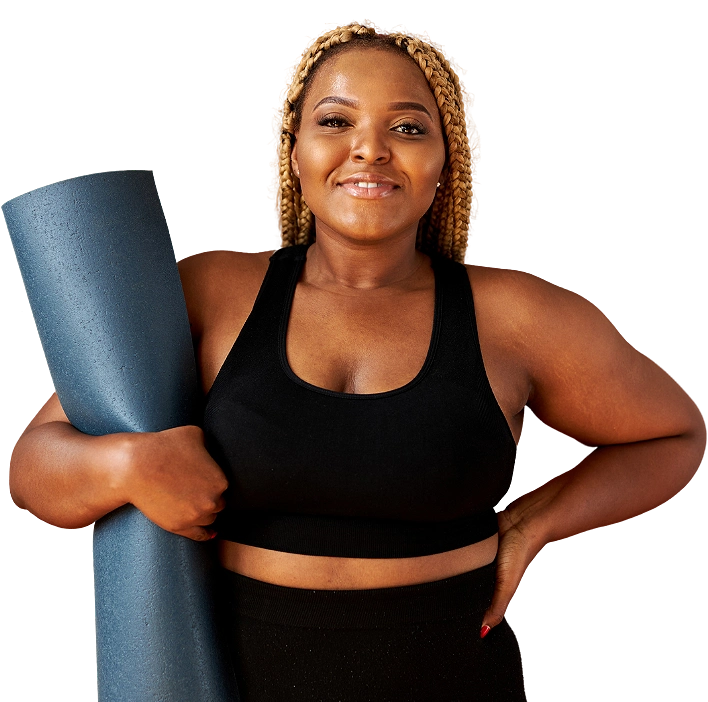
Don’t worry, pelvic floor dysfunction has not singled you out!
There are so many women out there living with pelvic floor dysfunction. It’s much more common than you think.
Talking about your intimate bodily functions can be really hard for a lot of women, especially when there is often shame associated with that part of your body.
But your pelvic floor doesn’t need to be embarrassing to talk about, not when you are in a safe space with people who truly get it.
There is nothing taboo about your pelvic floor — promise.
Know that there is hope, that many women make a full recovery from pelvic floor dysfunction and that you have not done anything wrong.
It’s not your fault and you’re not a problem that needs to be fixed.

You AREN’T weak or broken
This didn’t happen to you because you did something wrong or didn’t take care of yourself properly.
This happened because hey, it HAPPENS! It happens a whole lot more often than we think (but no one warns us about it), and to a whole lot more people than we think (but no one talks about it).
AND it doesn’t just happen to pregnant or postpartum women either. Pelvic Floor Ddysfunction (PFD)
can affect you at any stage of your life, find out how to identify PFD here
There are plenty of ways pelvic floor dysfunction can develop, and it can feel totally different
in each person. If you’d like to learn about what it feels like, you can find out more here.
Pelvic floor dysfunction can show up in many different ways…
Some of the more common conditions that may result from pelvic floor dysfunction are:
You might be feeling concerned or anxious if you’ve been diagnosed with one of these conditions.
If you haven’t been diagnosed, but suspect there is something not quite right — you could be feeling a bit lost, and scared.
Your pelvic floor dysfunction does not define you and there are a bunch of people having exactly the same thoughts as you are right now.
You’re not alone and you’re definitely not broken.
This is not your new normal!
There is a future where the symptoms you’re experiencing right now are greatly reduced. And, in many cases, completely healed.
With the right support and some simple daily exercises, you can regain your full body function and feel confident and strong when you move again.
So, how do you heal your pelvic floor?

Each case of pelvic floor dysfunction is unique to you and your body so getting to know your pelvic floor intimately and reconnecting with your pelvic floor muscles is a great place to start.
Find out more about the basics of
pelvic floor exercises here
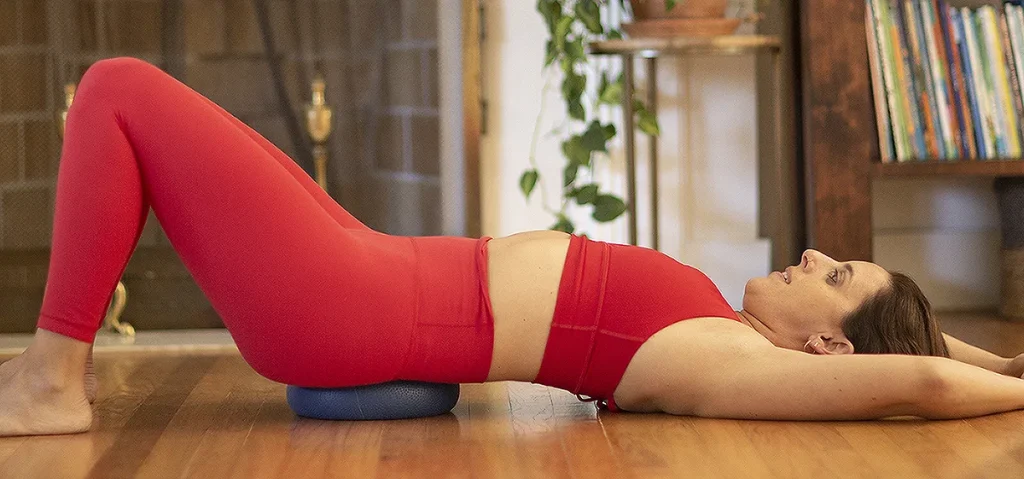
You might be surprised to discover that Kegels are NOT the cure all you may have been sold.
Pelvic floor dysfunction affects women in many different ways, so it’s fair to say that the treatment would be different for each issue, right? One exercise alone cannot heal pelvic floor dysfunction.
Find out how to effectively strengthen and lengthen your entire pelvic floor system here

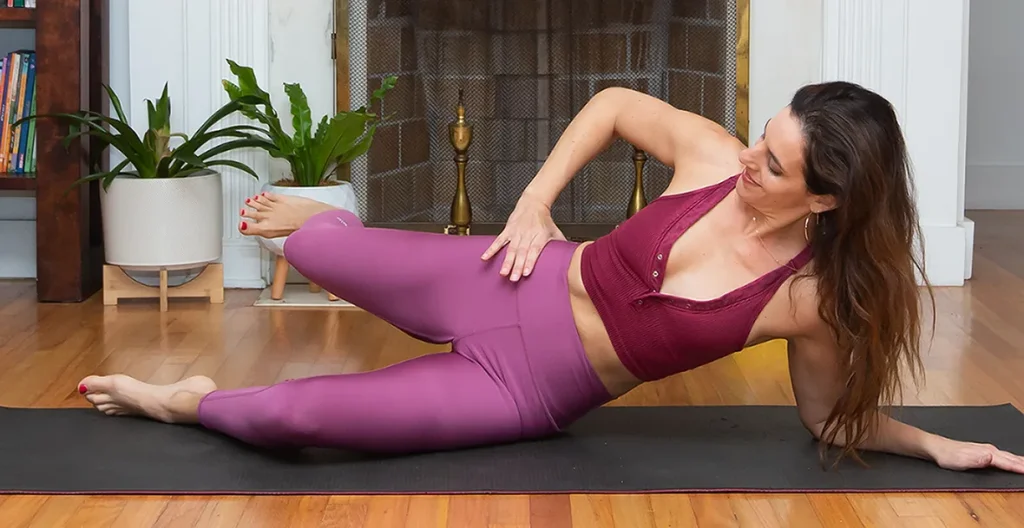
Your pelvis is vital to supporting your spine and entire body. Your muscles need to be able to relax just as much as they contract. A weakened pelvic floor doesn’t mean your muscles don’t work at all, they could be hypertonic (too tight) as well. So learning how to stretch and lengthen your pelvic muscles can be a great place to start.
Learn more about
stretching your pelvic muscles here.
Learn more about stretching your pelvic muscles here.

When your pelvic floor is compromised, other muscles compensate and this can lead to some of the symptoms you’re experiencing. But how can tight muscles be weak?
Find out how to
strengthen but not tighten your pelvic floor here</a.
Find out how to strengthen but not tighten your pelvic floor here

While exercise and conditioning may feel like
the long road to recovery, they are vital to your
alignment and muscle tone and offer long lasting results.
One of the first questions we are often asked is,
Can I heal my pelvic floor without surgery?
Well. The honest answer is… It depends. But in many cases, yes.
Healing looks different for everyone, and it always takes TIME.
While in today’s world we’ve been trained to look for instant solutions and quick fixes, the truth is our bodies simply don’t work that way.
While exercise and conditioning may feel like the long road to recovery, they are vital to your alignment and muscle tone and offer long lasting results.
One of the first questions we are often asked is,
Can I heal my pelvic floor without surgery?
Well. The honest answer is… It depends. But in many cases, yes.
Healing looks different for everyone, and it always takes TIME.
While in today’s world we’ve been trained to look for instant solutions and quick fixes, the truth is our bodies simply don’t work that way.

Each body is different.

Everyone is unique when it comes to their pelvic floor. In some instances, incontinence might be the most troublesome symptom, while for others it could be hip or low back pain, or a feeling of pressure/heaviness in the lower abdomen that is most concerning.
While many women can successfully address their pelvic floor issues without resorting to surgery, there are cases where it may be necessary.
Nevertheless, most surgeons advise attempting non-surgical healing methods for a minimum of one year before considering surgery. If you're interested in understanding when surgery might be needed for pelvic floor repair, you can find more information here.
There is a lot to consider before committing to surgery, pelvic floor therapy could be a helpful step before making a final decision. Read more about your options here.
Another option before committing to surgery is to consult with a Pelvic Health Physiotherapist or Occupational Therapist. You can learn more about how these pros can help here.
Introducing…
Restore Your Core® – The proven method for regaining your strength and confidence, long-term.
RYC® is a top-rated online pelvic floor program that will guide you to create a core strong enough to support you as you gradually move into more intense
exercise to help you reach your fitness goals.
RYC® is carefully designed to give you everything you need to safely do YOUR part in your healing process.
Your true healing happens in the small choices you make every day about how you move.
RYC® uses the CARE model to guide your pelvic floor healing.
- Core confidence: Regain your confidence to move, exercise and return to what you love. No fear mongering. No dogmas. No Judgment. Just a clear path to healing.
- Awareness: The best way to change patterns is to become aware of them. RYC® helps you learn about your patterns and habits, increasing your awareness both on and off the mat. This is key to long term, sustainable healing, allowing you to safely return to the activities you love.
- Responsive: To optimize your movements and activities, you need to first ensure your core and pelvic floor are responsive and functional. RYC® uses dynamic whole-body core stability workouts to accomplish this.
- Empowerment: Feel empowered with tools to be confident, aware of your body, and to move on to activities more complex without fear.
No more feeling lost, confused and in the dark about
your injury and what it takes to heal.
Healing pelvic floor dysfunction with RYC® feels like:

“I can lift heavy again, I can jump without leaking, sex isn’t painful anymore, and I’m stronger— not only physically, but mentally!
I know my body can heal.”
Barbara Martinez

“Without an ounce of drama, I can truly say that RYC® changed my life. With RYC® I learned to love and trust my body. To see and treat it like a wonderful part of who I am instead of like a broken pathetic taxi to carry my brain around in.
I love my life. I live pain-free.
Are you a human?? Then you need this core and pelvic floor program!! Your body and soul will reap life changing benefits.”
Steffanie Frandsen

“I had a major tailbone issue for over 2 years combined with a tight pelvic floor. Nothing I did ever was ‘enough’ to get relief. Then I found RYC®! I signed up and can honestly say I felt a change immediately!
I started breathing more effectively, which I didn’t even know I was having issues with, and my tailbone started hurting less.
All I can say is I haven’t felt this strong, resilient or functional in over 20 years and it feels great!”
Vicki L.

“After completing the RYC® 12-Week Program, I am asymptomatic, have increased mobility, am more relaxed, and I can even go on a walk around our neighborhood with my family (1.25 miles!). RYC® has given me a community of support and an abundance of hope. I know that without a doubt I will continue to use RYC® on a regular basis for my whole life!
Mobility and bodily autonomy are invaluable and I have found such a wealth of information through RYC®.”
Brittany Czekaj

“I was scared to do just about everything because I didn’t want to make things worse.
Restore Your Core® gave me the permission I needed to move again, the grace to meet my body where it’s at, and tools to support my body holistically. The supportive and helpful community is the cherry on top, and I’m grateful to be a part of it.”
Katie Jackson

“I had no idea how much I would gain when I started RYC®. I love Lauren’s teaching. I love the guiding principle that if you challenge your body in a way that is doable for where you are at today, you will build strength over time. This has 1000% been true for me and it feels amazing.
I feel fit and confident that I can challenge my body in all the right ways.”
LK

“RYC® explains the fundamentals of movement – and I finally understand that I spent so much energy compensating for core function with other body parts. Thanks to RYC®, I‘m now very close to getting back to my favorite activities.I can feel my core work during exercise and every day movements.
RYC® has taught me to work smarter, not harder.
At Stage 3 of the program, I feel so accomplished already—I can’t wait to see what Stage 4 brings!”
Raya Sagdejeva
Healing pelvic floor dysfunction with RYC®
looks like being able to…
- Move effortlessly without worry.
- Have fewer aches and pains.
- Workout harder with more intensity.
- Move without fear.
- Listen to your body and respond.
- Ditch flat belly culture.
- Embrace full body healing.
- Lift your kids.
RYC® has helped thousands of women with pelvic floor dysfunction…
We’d love to help you too.














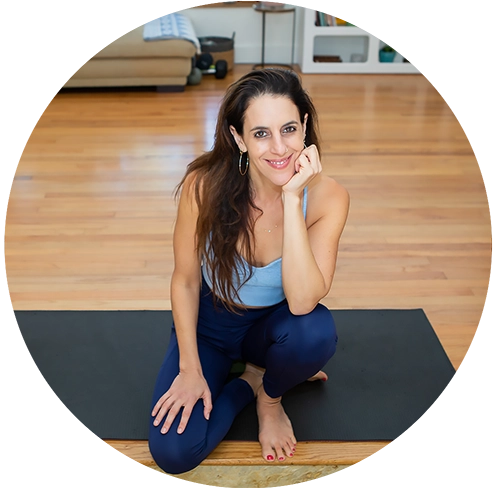
Lauren Ohayon
Founder and program developer RYC®
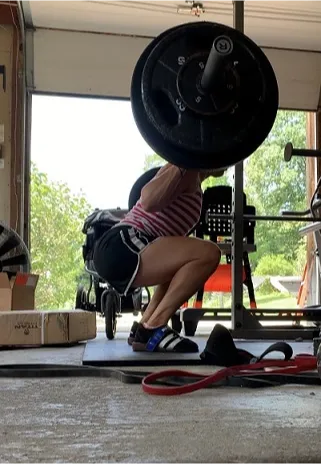
“There is no thank you big enough for Lauren Ohayo existing and thinking and helping so many of us. Every time I do something I never thought I’d do again she is part of the reason why.”
Laura Gregg

“Lauren Ohayon’s voice in my head telling me: ‘this is how you feel today, it does not mean you’ll feel like this forever, or even tomorrow’.”
Silje Vold

“Lauren Ohayon, whenever you say thank you at the end of your videos, I say thank you back, but you can’t hear me. So, Thank you Lauren!”!
Hanna Sandvig

“Your work amazes me each day and I am so happy my body can grow old with you by my side Lauren Ohayon.”
Ivy Goldmann Garr

“Lauren. Love you. Love your work, Thank you for all you do for us. We’re lucky to have you (and so are my knees!).“
Ali Airey
Choose your track
 Lifetime access
Lifetime access
![]() RYC® Essentials
RYC® Essentials
pacing or accountability.
- 12-week calendar provided — follow manually
- Navigate without daily reminders or built-in structure
- Some modifications available, but not delivered as a separate path or as comprehensive

RYC® Guided
and a clear path to consistency.
- 2x more likely to complete the full 12 weeks and feel lasting relief
- No decision fatigue — just press play and go
- More workout options
- Includes full Supported Path: chair + scaled modifications
- Based on 10,000+ successful healing journeys
- Tracks your progress and unlocks each phase to keep you focused
![]() RYC® Guided+
RYC® Guided+
certified RYC® Coach.
- Includes everything in Guided
- 2 private sessions with your certified RYC® Coach (intro + checkin)
- Option to add sessions as needed
Choose your track
 Lifetime access
Lifetime access

![]() RYC® Essentials
RYC® Essentials
- 12-week calendar provided — follow manually
- Navigate without daily reminders or built-in structure
- Some modifications available, but not delivered as a separate path or as comprehensive
RYC® Guided
- 2x more likely to complete the full 12 weeks and feel lasting relief
- No decision fatigue — just press play and go
- More workout options
- Includes full Supported Path: chair + scaled modifications
- Based on 10,000+ successful healing journeys
- Tracks your progress and unlocks each phase to keep you focused
![]() RYC® Guided+
RYC® Guided+
- Includes everything in Guided
- 2 private sessions with your certified RYC® Coach (intro + checkin)
- Option to add sessions as needed
Why most choose RYC® Guided
![]() RYC® Essentials
RYC® Essentials

RYC® Guided
![]() RYC® Guided+
RYC® Guided+
Got questions?
Weak pelvic floor muscles can cause a variety of issues, some of the most common symptoms include:
- Stress incontinence (sneeze pee)
- Urge incontinence (incessant need to urinate)
- Recurrent urinary tract infections
- Fecal incontinence (inability to control bowel movements)
- Passing wind from the anus or vagina when bending over or lifting
- Reduced sensation in the vagina
- Tampons won’t stay in place
- Bulge at vaginal opening
- Sensation or heaviness in the vagina or lower abdomen
- Vulva pain, pain with sex, inability to orgasm
If these symptoms are not addressed, they can increase over time until they are potentially debilitating.
Pelvic girdle (or pelvic floor) pain is a common symptom among women and can be caused by any number of conditions from bladder infection to endometriosis. Symptoms may include pelvic discomfort that spreads towards the lower back, abdomen and hips. It may also cause symptoms such as difficulty urinating, burning sensation during urination, intense urge to urinate, constipation, pressure or heaviness in the lower abdomen or pelvic floor, and pain during or after sex.
In short, yes. The term Kegel is often used interchangeably with other pelvic floor exercises BUT all exercises are not created equal and do not have the same effect on your pelvic floor system.
Kegels are only one technique for strengthening the pelvic floor.
They are often overused and can lead to people becoming more symptomatic. Kegels don’t teach you how to release your pelvic floor – which is just as important, if not MORE important than being able to tighten it.
There are lots of different techniques to strengthen and lengthen your pelvic floor. Kegels are not your only option.
Pelvic floor symptoms can arise when the pelvic muscles are overstretched, weakend, or more often than not, too tight. While some people may naturally have weaker pelvic floor muscles or develop them from an earlier age, others may notice problems after specific stages in life such as: pregnancy, childbirth and menopause.
To address tight pelvic floor muscles, it’s essential to focus on lengthening and relaxing the muscles rather than “loosening” them. Incorporating exercises like those found in Restore Your Core® and certain breathing techniques can be effective in promoting relaxation and flexibility in the pelvic floor muscles.
There are many effective ways to strengthen a weak pelvic floor that don’t involve doing Kegels. The RYC® 12-Week Program offers a wide variety of techniques, exercises, and education to help you care for your pelvic health daily. By focusing on breathing, alignment, and whole-body movement, RYC® helps retrain your pelvic floor to work in harmony with your core – often with better results than Kegels alone.
Exercises that put excessive strain on the pelvic floor muscles can potentially make pelvic floor dysfunction worse. These exercises may include:
1. Heavy weightlifting: Lifting heavy weights with poor form and preparation can strain the pelvic floor muscles.
2. High-impact exercises: Activities like running, jumping, or vigorous aerobics can place increased pressure on the pelvic floor.
3. Abdominal exercises: Some traditional abdominal exercises, such as sit-ups or crunches can increase symptoms of PFD.
4. Exercises that involve intense core engagement: Certain exercises that heavily engage the core, like planks or intense Pilates workouts, may affect the pelvic floor negatively if performed without proper form and control.
5. Exercises that cause breath-holding: Holding your breath during heavy lifting or strenuous exercises can increase intra-abdominal pressure, which can stress the pelvic floor muscles.
It’s crucial for individuals with pelvic floor dysfunction to work with a healthcare or fitness professional who can provide guidance on safe and appropriate exercises to help manage their condition. They can recommend exercises that strengthen and support the pelvic floor without exacerbating the dysfunction.
Tight pelvic floor muscles are often referred to as hypertonic, meaning the muscles are too tight.
Hypertonic muscles can reduce the ability for the pelvic floor muscles to function appropriately. Pelvic floor tension can lead to a variety of symptoms including: urinary or fecal incontinence, pain during or after intercourse, a feeling of fullness or heaviness in the lower abdomen or pelvic floor, and limited movement of the hips and lower back.
Yes, there are two different types of massages that are often used to relax the pelvic floor: a perineal massage and an internal trigger point massage. A perineal massage is perfect for postpartum pelvic floor pain resulting from scar tissue. An internal trigger point massage is best for helping relax tight pelvic floor muscles with the presence of pelvic floor dysfunction.
The RYC® 12-Week Program by Restore Your Core® is one of the most widely recommended options for pelvic floor rehabilitation. Created by pelvic floor movement specialist Lauren Ohayon, RYC® helps retrain your core and pelvic floor as part of a full-body system – focusing on breath, alignment, and responsive movement rather than just Kegels.
It’s especially effective for issues like prolapse, diastasis recti, incontinence, and tight pelvic floor muscles. With scalable options and expert support, RYC® has helped over 10,000 women in 80+ countries heal without surgery or high-impact workouts.
Yes. The Restore Your Core® Method is recommended by a wide range of health experts – including Medical Doctors, OBGYNs, Pelvic Floor Physical Therapists, and other wellness professionals. Its whole-body approach to core and pelvic floor rehabilitation is respected for being both safe and effective, especially for those seeking non-surgical healing options.
Unlike programs that focus mainly on Kegels, abdominal bracing, or postpartum fitness, RYC® addresses the root causes of pelvic floor dysfunction by retraining your entire system: not just the pelvic floor, but how your breath, posture, nervous system, and movement patterns all work together. This makes it suitable for a wider range of symptoms, including tight pelvic floor muscles and chronic pain – not just weakness or new moms.
Still got questions? We’ve got answers
Reach out to us here and we'll get back to you.
Get more actionable info, inspiration and exclusive offers delivered to your inbox.
*No spam, just quality content and support

Thanks for subscribing!
Please check your inbox soon.

